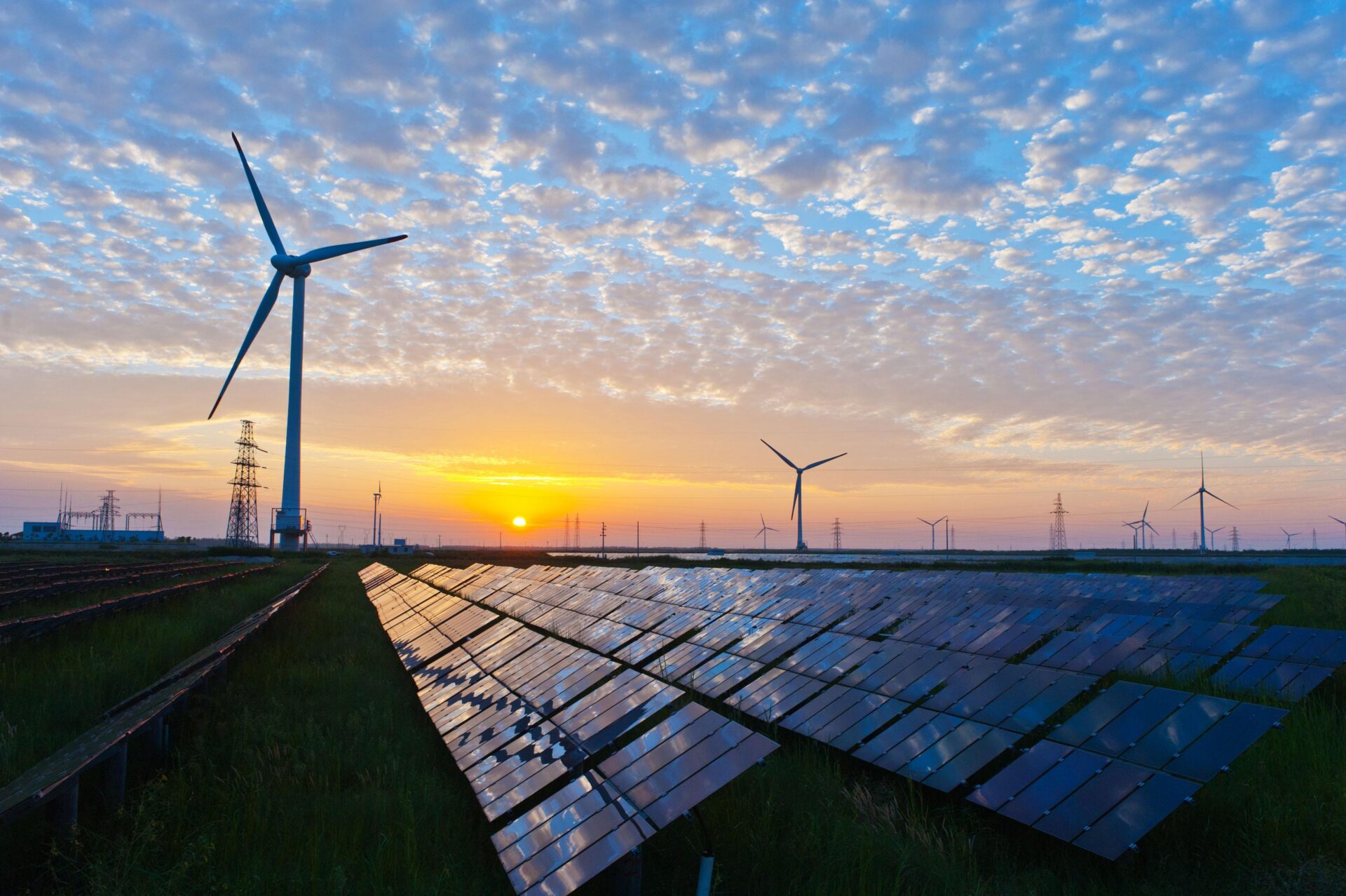Indeed, the Climate and Energy Outlook (KEV) 2022, which came out on November 1 last year, showed that the existing government plans for CO2 reduction do not yet add up to the desired goal of 55% reduction compared to 1990. This KEV is published every year to give just that insight into the CO2 reduction range of the intended climate measures. According to the KEV 2022, the adopted and planned policies only lead to an emission reduction of 39 to 55% in 2030. That this bandwidth is relatively large is due to a large number of uncertainties taken into account in the calculation models, such as economic growth and technological progress. The IBO Climate must therefore form the bridge between the KEV and the Netherlands' climate goals for 2030. The preparation of the official report was led by Laura van Geest, board chair of the Financial Markets Authority. She led an interdepartmental working group of officials from the Ministries of EZK, I&W, LNV, BZK, FIN and several other experts from research institutes and the Netherlands Bank.
With the IBO Climate as the menu for CO2 reduction measures, Minister Jetten is on paper the chef responsible for putting together the entire "emissions reduction dinner. Although, in practice it appears that the measures are negotiated at a high political level. Van Geest already hinted in the report that the days of low-hanging fruit are over. As the title of the report reads, "Sharp goals, sharp choices," the measures to be chosen that add up to the desired emission reduction in 2030 will most likely not please everyone. A trial balloon for a blending requirement for biofuels in the mobility sector, which presumably did not land in the media entirely by accident, could thus count on a lot of resistance from public opinion.
The IBO distinguishes between measures to be taken based on the sector tables as created in the Climate Agreement. These are the sector tables built environment, agriculture and land use, mobility, industry and electricity. Finally, cross-sector measures have been identified. To achieve the desired emission reduction, additional policies are needed that add up to 22 Mton CO2 reductions. These megatons can thus be divided among the sector tables, depending on the preference of the minister and the cabinet. The menu contains 77 measures that focus mainly on standardization and pricing. This was also the mandate from the minister, since there is already a large focus on subsidizing measures with the Climate Fund. Finally, the IBO provided an advance on the compilation of packages of measures. For example, a central package has been put together around which the report largely provides explanations. In addition, the report includes two alternatives packages, with one package sparing agriculture and one package sparing the ETS1 sectors.
The menu
The central package from the IBO calculates the greatest emission reduction in the mobility sector, where an additional reduction of 5.6 Mton in emissions is proposed. Measures proposed here include banning new sales of fossil business cars, tightening pay for use, sharply increasing the blending obligation for biofuels in road traffic, and making aviation more sustainable through an air passenger tax. In addition, additional measures would seem necessary to roll out the charging infrastructure sufficiently quickly to meet the charging demand of the future car fleet.
- After the mobility sector, the industry sector, along with agriculture and land use, is allocated the largest emission reduction in the central package. According to this package, both sectors have to believe in an emission reduction of 5.5 Mton. For industry, this additional emission reduction is outlined in particular by increasing the national CO2 tax to €250 per ton of CO2 in 2030. Also, the number of dispensation rights should be reduced by 3.7 Mton by 2030. In addition, there should be a mandatory share of recycled plastics and waste incineration should be reduced and the resulting emissions captured with CCS. As a precondition, a Climate Urgency Office is proposed to identify and resolve bottlenecks.
- At the same time, the agricultural sector is proposing to control livestock size and introduce sustainability standards for livestock feed. Secondly, it is proposed to achieve a shift to plant-based proteins through a tax on meat and dairy, among other things. Finally, the tightening of pricing policies in greenhouse horticulture is mentioned as an option to reduce emissions in the agricultural sector.
- In the built environment, according to the central package, an additional emission reduction of 2.3 Mton is needed. This total would have to be achieved, among other things, by standardizing the sustainability of owner-occupied dwellings in line with the transaction moment. In addition, the energy tax should be changed so that gas use becomes more expensive in the future, while electricity use becomes cheaper. Finally, the main key measure from the central package in this sector is to standardize sustainability of non-residential construction and tighten energy performance requirements of buildings.
- The central package charges the electricity sector with the least additional CO2 reduction; 2.2 Mton in total. This reduction, according to the package, must be achieved by facilitating a further rollout of solar energy by encouraging batteries at solar parks, standardizing and encouraging rooftop solar and parking lots, and investigating solar at sea. In addition, a normative plan should be developed now to achieve an emission-free electricity sector by 2035, and electricity use should be saved through measures in other sectors.
In conclusion, the IBO looks explicitly at points of attention and preconditions needed to properly implement the proposed measures. In the area of support and behavior, for example, it is recommended that behavioral experts be involved at an early stage in making climate policy. With regard to implementation, it is recommended to speed up permitting and avoid delays in procedures. In addition, it is suggested that nationally safeguarding instruments such as an emissions cap be examined in the context of the longer term. Finally, a large number of concerns are also highlighted on behalf of negative emissions, such as determining when CCS capacity should be retained for negative emissions.
The political preparation
The report totals 100 pages, 77 proposed measures, legion of preconditions and three highlighted packages of measures. In other words, enough reason for MPs to ask for additional explanations in the form of a technical briefing in the House of Representatives. This was held on April 6. Bontenbal (CDA) and Erkens (VVD) explicitly asked for attention to possible carbon leakage effects for industry when degressivity is abolished and the CO2 tax is forgone. Van Geest countered that CE Delft and PBL would have taken the working group to task if the possible leakage effects were draconian. In addition, Teunissen (PvdD) asked about the difference in emission reduction potential between innovative measures and shrinking livestock. The answer was that a reduction potential of about 40% can be achieved through technical measures.
About a week and a half after the technical briefing in the House of Representatives followed the Note Consultation that the House of Representatives held with the Minister of Climate and Energy on Monday, April 17, 2023. The fact that a note consultation was organized instead of a more usual committee debate has to do with the fact that through a note consultation MPs can directly submit motions. MPs were eager to do so, in order to ensure that any motions passed could be included in the decision-making on the additional climate measures. In order for the climate plans to be adequately calculated into this year's KEV, that decision-making must be completed before May 1. That is the deadline that PBL uses to pass on policy in the KEV. MP Thijssen (PvdA) therefore saw his chance to request a vote on the submitted motions in the last order of business before the parliamentary recess. For the opposition parties in particular, the fact that Minister Jetten for Climate and Energy had given the House judgment on zero of the eleven motions tabled during the debate on the memorandum of understanding was a shock. It was therefore no great surprise that all motions put to the vote were rejected.
The foreshadowed policy?
And that makes that on the eve of the pre-shot policy, additional climate measures are still in limbo for the general public. We have already had a brief taste of the amuse of the biofuel blending requirement, but its reception was critical. Moreover, reports on this showed that (additional) climate policy is yet another hurdle that painfully divides the governing parties. With the news today that the cabinet is as good as settled on the climate plans, their announcement is expected after the council of ministers this afternoon. This appears to meet the May 1 deadline to pass the plans in the next KEV. This is important news for meeting the 2030 climate goals. Those goals are already under pressure from, for example, the nitrogen problem, grid capacity and labor shortages. If indecision on climate measures had been added to this, the set goals would have been pushed further and further out of sight as the months toward 2030 count down. Now we have to wait, before we know what additional climate policies will be presented to us. This climate package will be announced today (25/04/2023) after the Council of Ministers. This package coincides with the decision-making on the Spring Memorandum. The Spring Memorandum is also expected to be sent to the House of Representatives before the end of the month. The aftermath of the policies to be announced today will resume full attention after the parliamentary recess. Being told what's on the menu is one thing, but ultimately it's all about the taste. Besides, the soup is not always eaten as hot as it is served.


